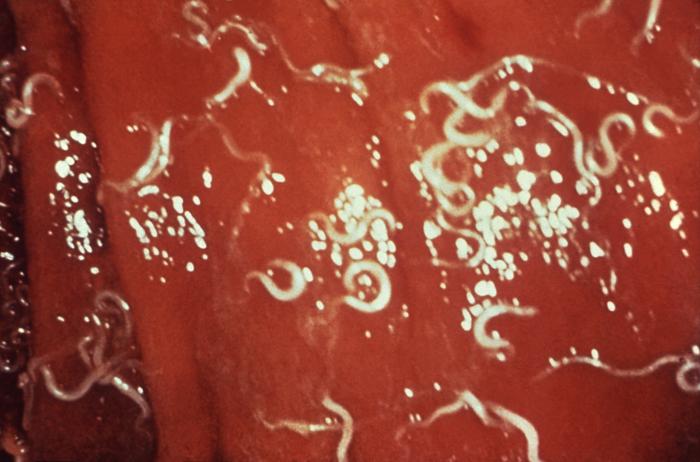On today’s podcast, my special expert guest, Parasitology teacher and author of Parasites: Tales of Humanity’s Most Unwelcome Guests, Rosemary Drisdelle and I continue our look into the wonderful world of human parasites sticking with the intestinal nematodes–Trichuris trichiura or whipworm.
Along with the other soil-transmitted helminths we’ve discussed, hookworms, and Ascaris lumbricoides, they infect more than 1.5 billion people globally, or 24% of the world’s population, accounting for a major burden of disease worldwide.
Podcast: Play in new window | Download
Subscribe: Apple Podcasts | RSS
Save up to 40% off tours and activities in Chicago
Related:
- Dientamoeba fragilis: ‘The unflagellated human flagellate’
- Lymphatic filariasis in Nigeria: The battle against the disfiguring parasitic disease
- Parasites 101: Pinworms
- Parasites 101: Entamoeba histolytica
- Diphyllobothrium: The largest known tapeworms that can infect people
- Parasites 101: Swimmer’s itch
- Parasites 101: Cyclospora
- Coyote tapeworm in Alberta: 5th human case reported
- Raccoon roundworm: The rare and potentially lethal zoonosis
- McGill researchers discover that there are three genetically distinct groups of whipworms
- Chewable parasite drug, EMVERM, now available for treatment pinworm, others
- Gnathostomiasis identified as cause of Australian teen’s illness years after infection

Image/CDC
Intro music: “Rapture” by Ross Bugden


Be mindful whipworms are very common in dogs and can be transmitted to humans.